The animal kingdom provides so much diversity that it’s almost impossible to keep track of all the different species in the world. Sometimes the distinction between close relatives is too hard to even notice. But different species often evolve in similar ways because of their environment.
We at Bright Side gathered 16 pairs of animals who are almost indistinguishable from each other at first sight in order to show you the differences between them.
1. Jaguar vs leopard
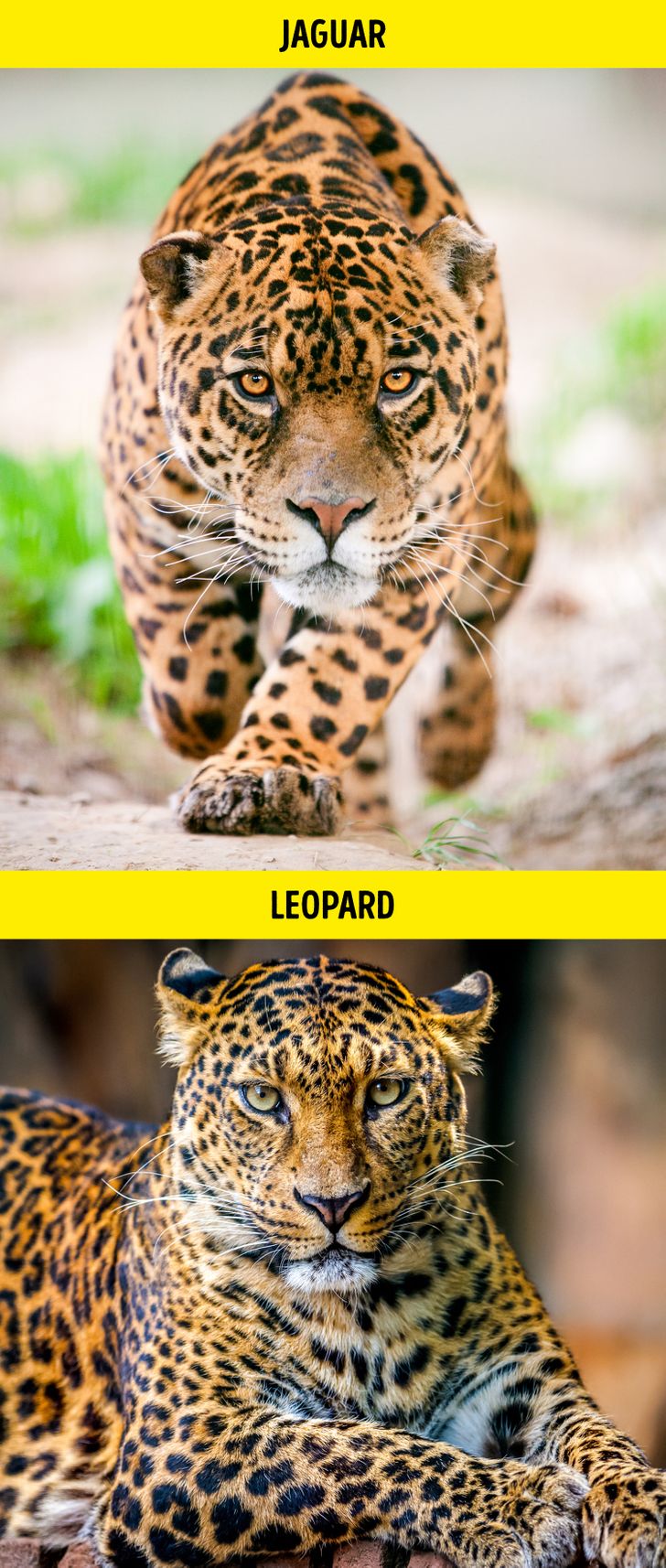
Despite their similarities, these big cats inhabit different continents and climate zones: leopards live in African savannas, while jaguars dwell in South American tropical forests. Jaguars are also larger and bulkier, and unlike leopards and many other cats, they’re fond of water.
2. Alligator vs crocodile
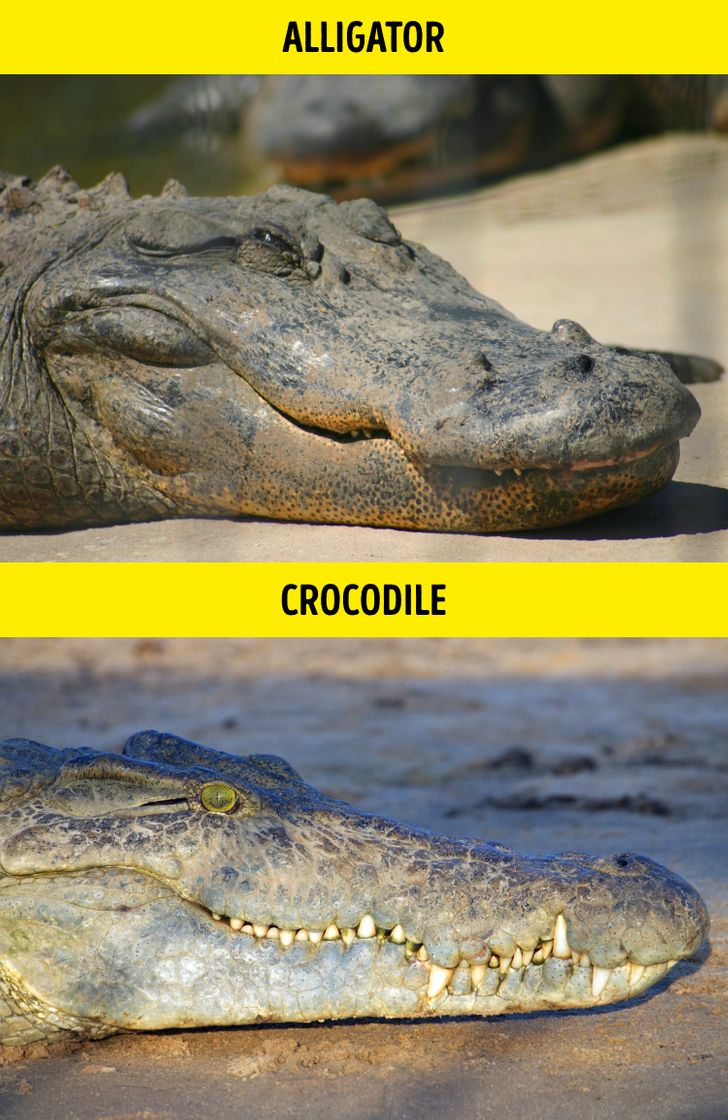
You can easily identify these 2 by the shape of their snouts: crocodiles have prominent, elongated V-shaped faces while alligators have shorter, wider U-shaped ones. Also, consider the teeth: crocodiles display their trademark toothy “grin” with every fourth tooth visible. Conversely, the alligator’s upper jaw is broader than the lower one, so its teeth aren’t visible for the most part.
3. Wasp vs hornet
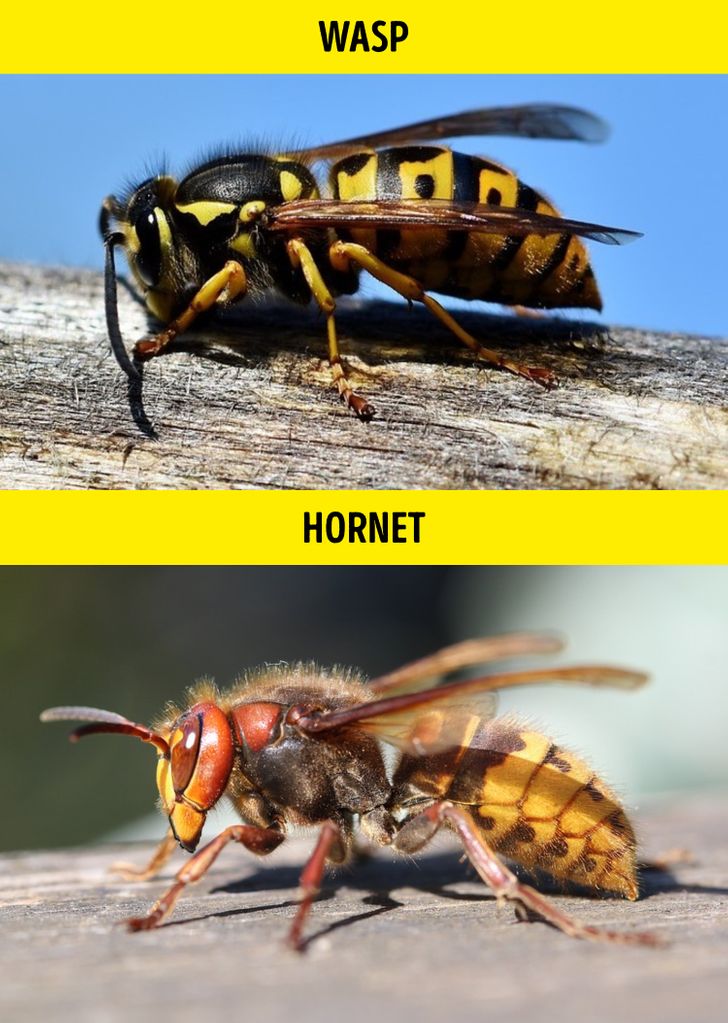
Both insects are menacing, that’s for sure. Hornets are larger and boast orange and black coloring, resembling spots rather than stripes, while wasps are more brightly colored and have yellow and black rings. You’re better off avoiding both.
4. Seal vs sea lion
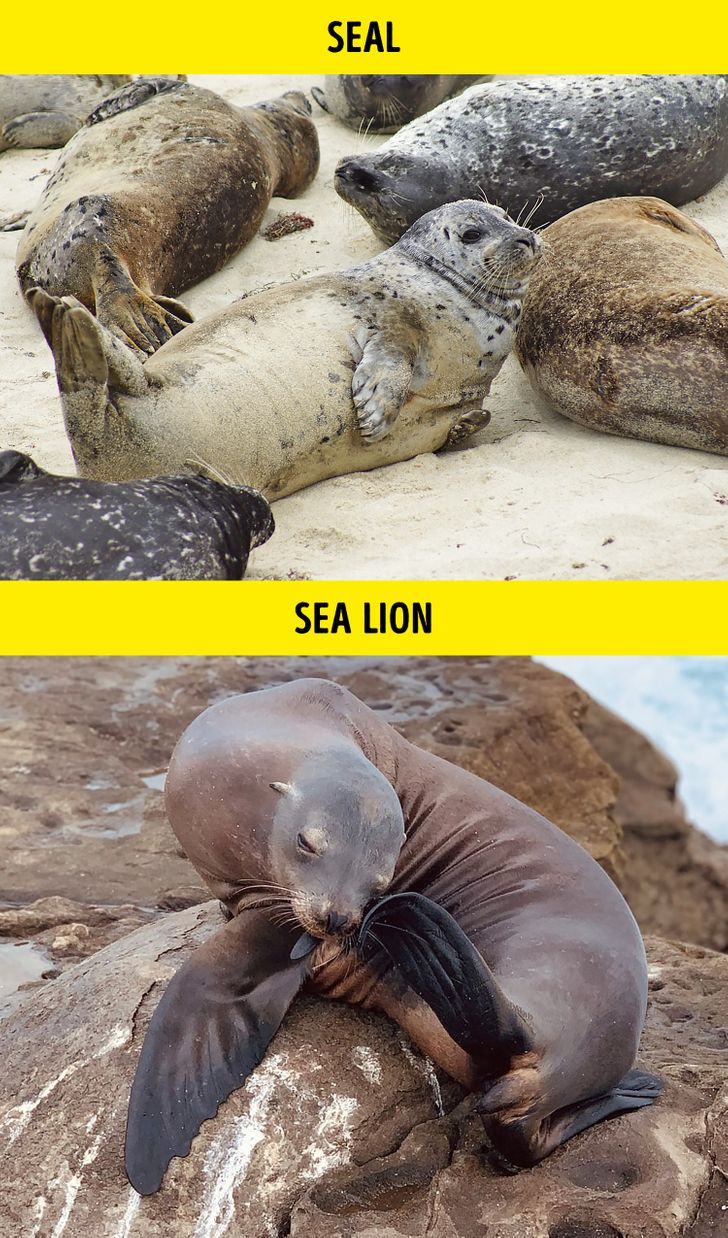
You’ve most likely met seals as cute plushy animals and sea lions as circus acrobats. Seals are covered with fur and have tiny front flippers which prevent them from walking, forcing them to wiggle on their bellies. Sea lions have smooth skin and vast flippers that they use to move on the ground.
5. Turtle vs tortoise
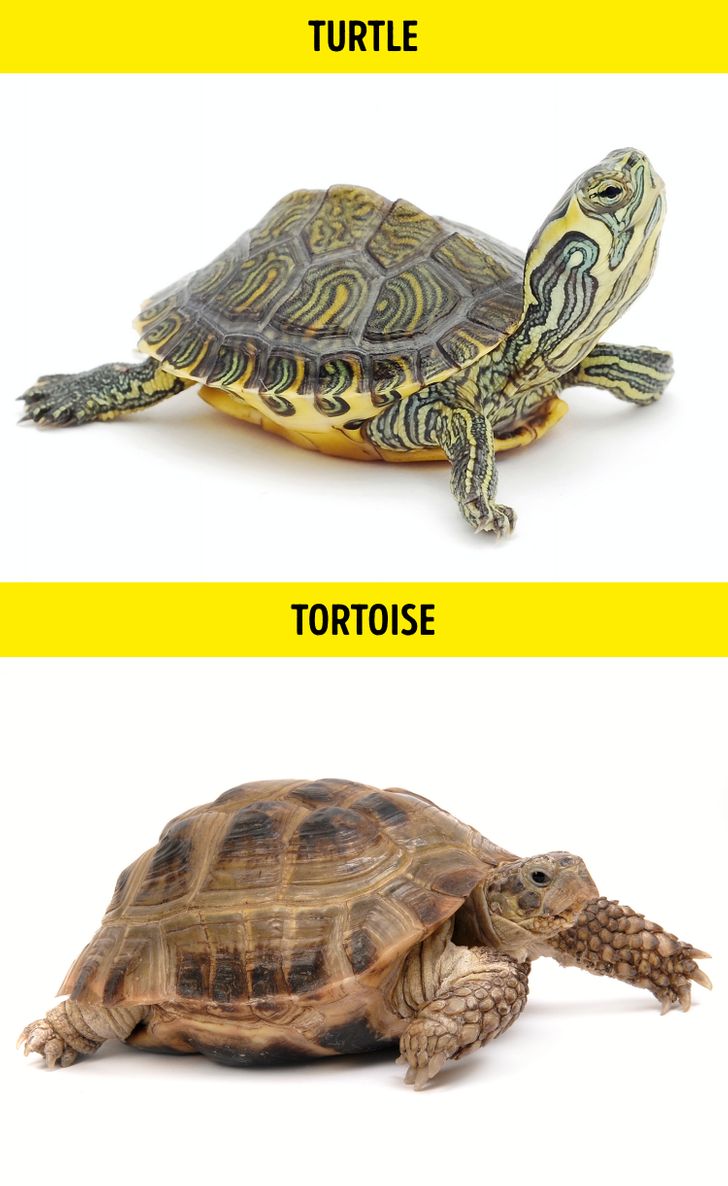
These 2 are both mobile (but very slow at that) and boast 4 legs. But the “turtle rock” is aquatic and has markings that resemble stains and circles on the water to better hide in the ponds. The “tortoise rock” is a land animal and spends most of its time on the ground — that is, as a literal rock.
6. Raven vs crow vs rook vs jackdaw

Most corvids look fairly similar (excluding jays who are like a theatre kid in a goth family). Ravens are the loftiest and most fashionable thanks to their “beard” of throat feathers. Crows and rooks are of the same size, but rooks have a distinct grey beak and fancy feather “pants” on their legs. Jackdaws are the goofiest-looking thanks to their very short beaks and a round heads with black caps.
7. Donkey vs mule
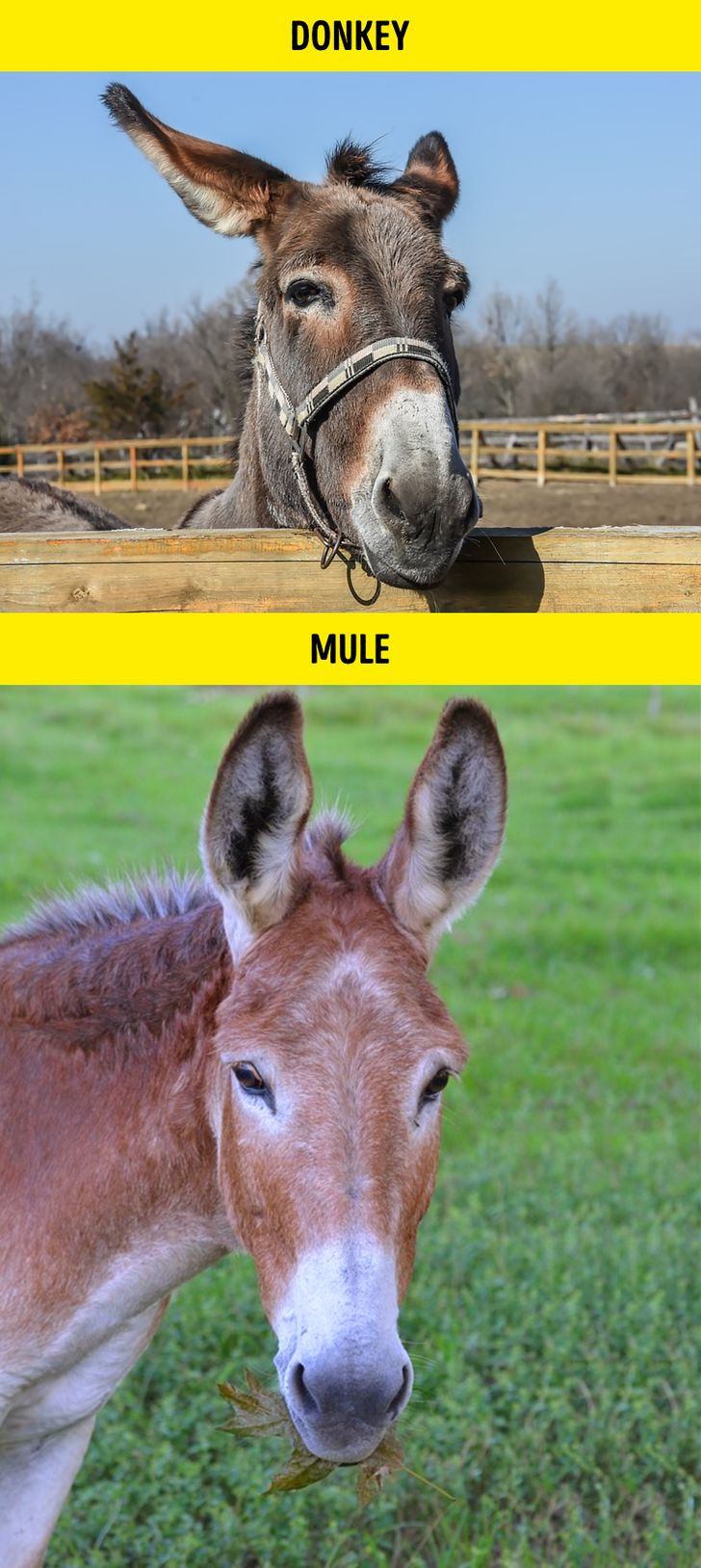
This one is tricky for a simple reason: while the donkey is its own species, a mule is a hybrid of donkey and horse. Funnily enough, it looks exactly like what you’d think these 2 animals would look like: an elegant head of a horse with ridiculously oversized donkey ears.
8. Hare vs rabbit
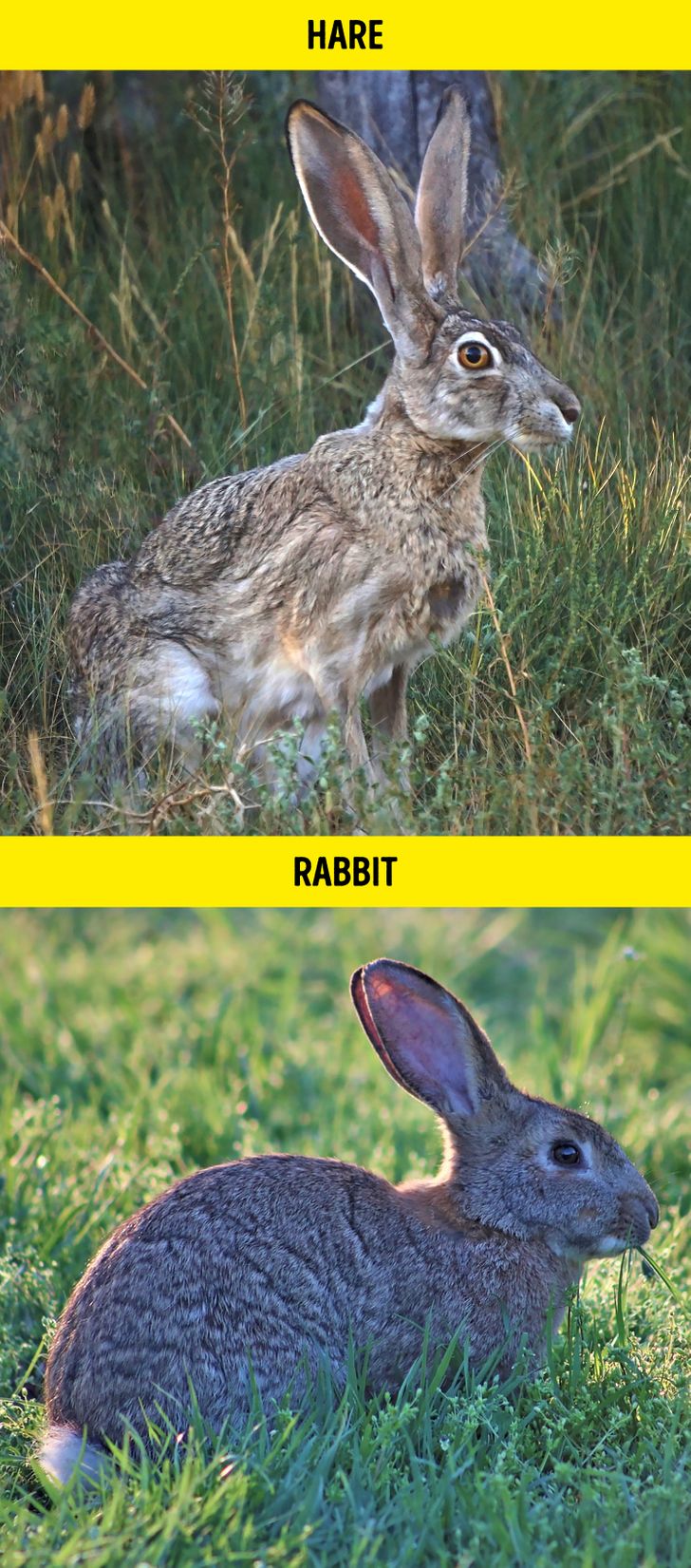
If you want a cuddly little pet, a rabbit is your best bet, but a hare definitely is not. Hares are larger and faster and have longer legs and ears. Rabbits are smaller, fluffier, and overall “cuter.” They even eat different food: rabbits prefer vegetables (like carrots) and soft grass while hares prefer bark and twigs. Rabbits are social animals while hares tend to be solitary. It’s no wonder rabbits are easily domesticated while hares mostly stay feral.
9. Moth vs butterfly
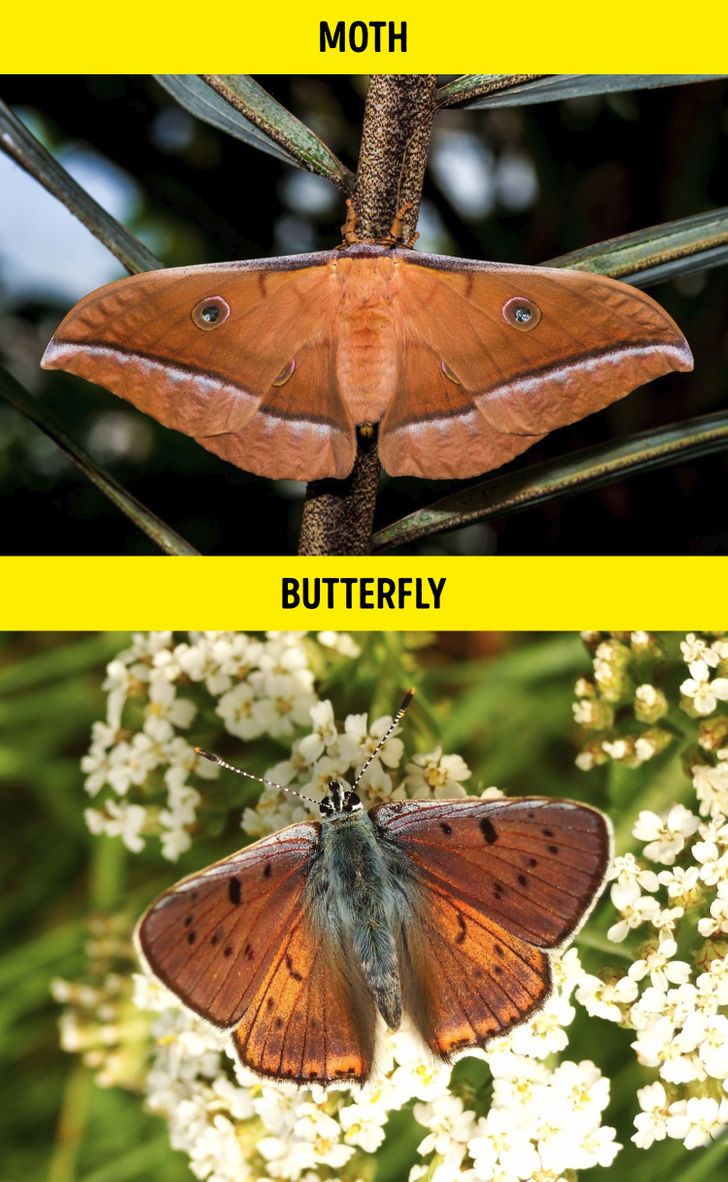
Moths have tent-like wings while butterflies flap their wings vertically. Moths usually rest with their wings open, while butterflies rest with their wings closed. Their antennas also differ: butterflies’ are long and thin and moths’ are short and feathery. Butterflies are strictly diurnal, while moths are mostly nocturnal.
10. Dolphin vs porpoise
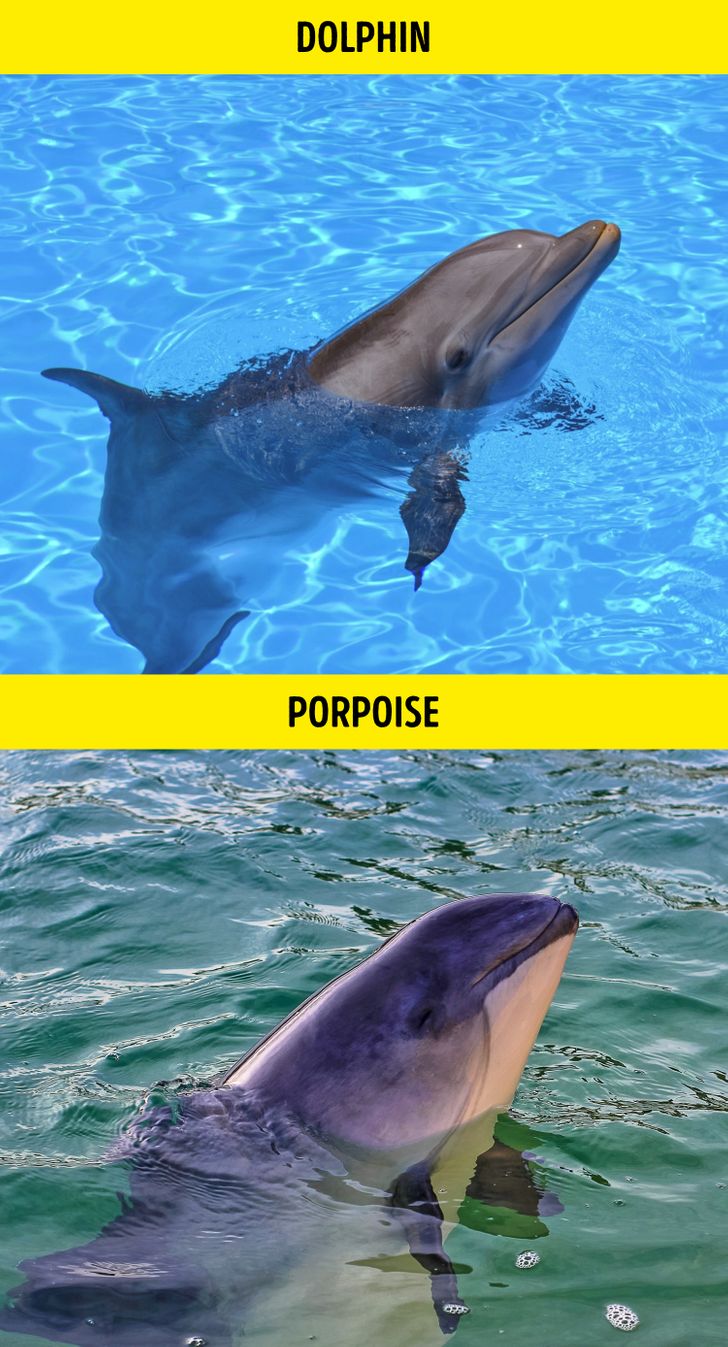
The difference between dolphins and porpoises comes down to their snouts, fins, and figures. Dolphins have long “beaks,” slender bodies, and curved dorsal fins. Porpoises have more flat, sloping faces, smaller flippers, and shorter triangular dorsal fins.
11. Weasel vs stoat
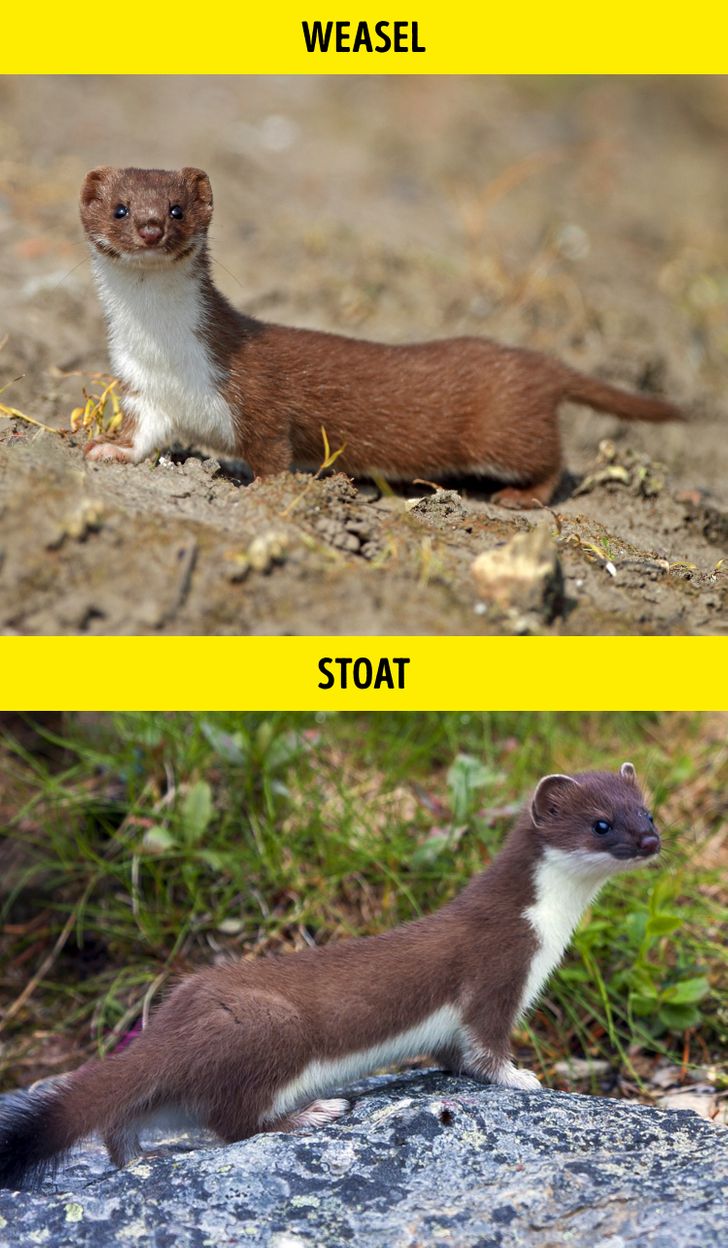
These 2 animals are close relatives. Stoats are bigger and have long tails with fuzzy black tips, while weasels’ tails are short and of the same color as the rest of the body. Stoats move in a bouncing gait with an arched back which looks hilarious, and weasels keep closer to the ground. Stoats also turn white in winter.
12. Eagle vs hawk vs falcon
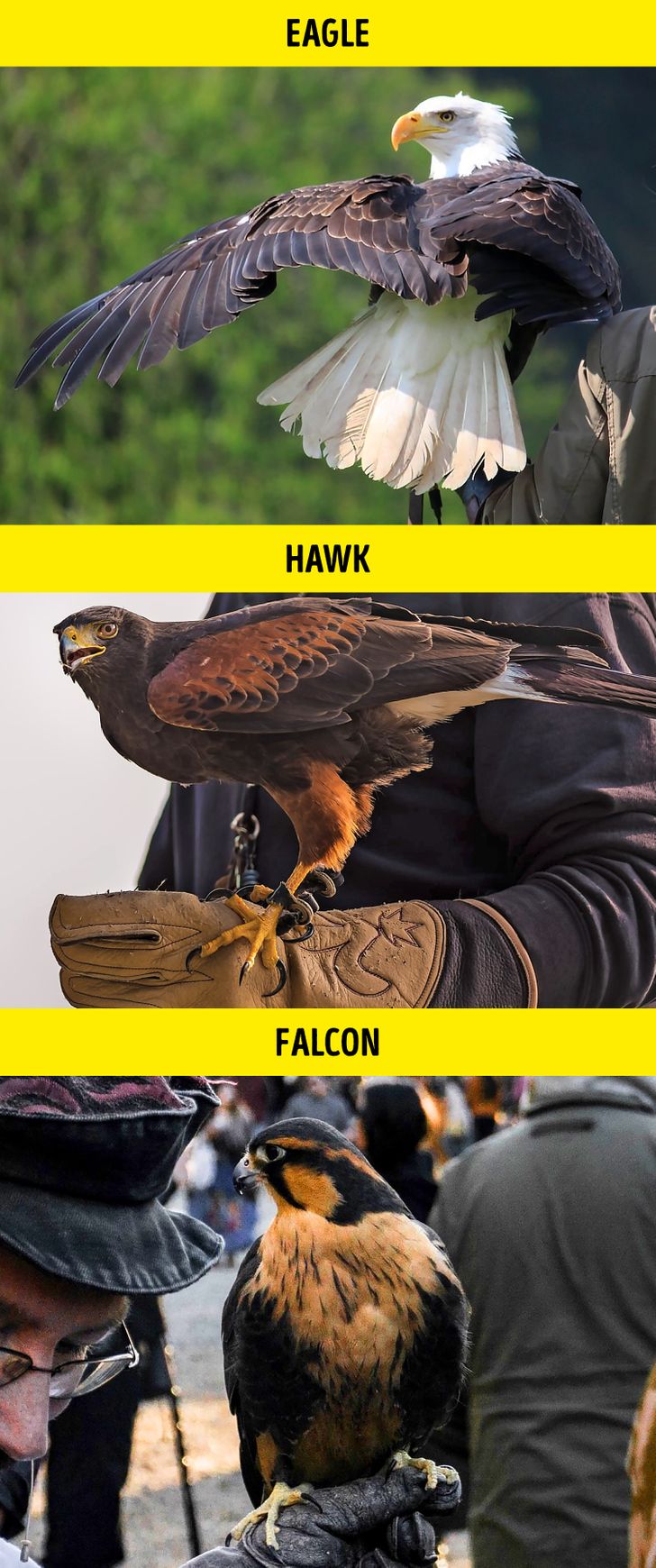
Eagles are gigantic, powerful birds who prefer to live in open spaces like cliffs and mountains. Hawks are a little smaller and more nimble in the air, capable of maneuvering in more closed areas. Falcons are the smallest and fastest of the 3 and differentiate the most visually: they have larger eyes and shorter beaks.
13. Mouse vs rat
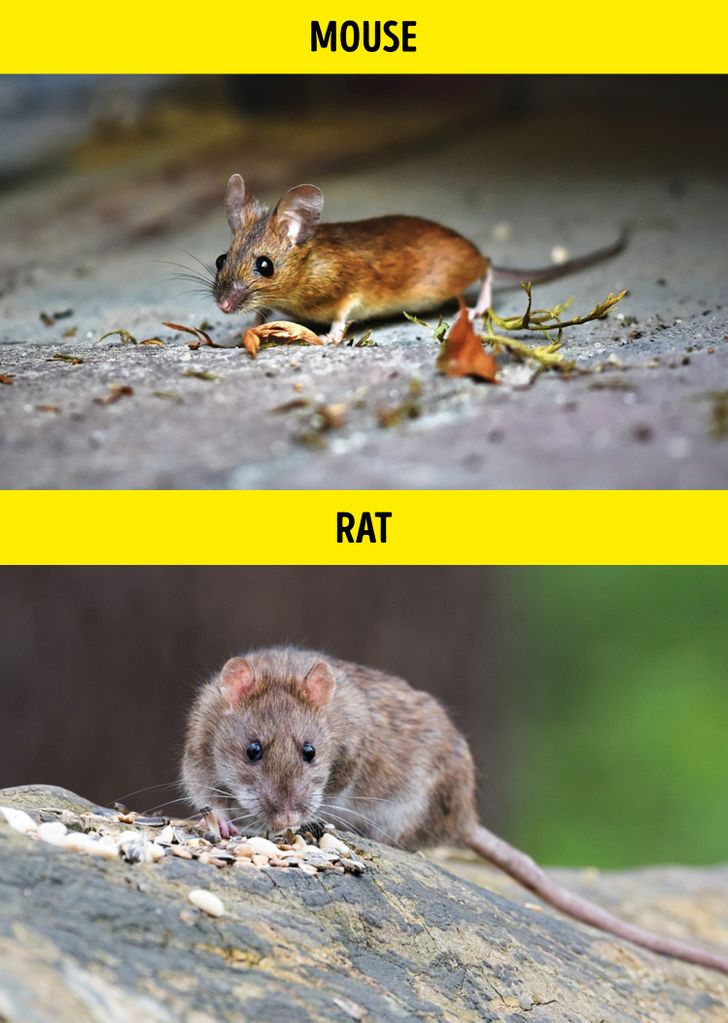
The 2 most famous (or infamous) rodents can be easily distinguished by 3 things: their size, tail, and ears. Mice are diminutive, even compared to young rats; they have thin long tails covered with fur while rats’ tails are thick and hairless. Mice have ears that are bigger in proportion to their bodies and are round and floppy with a tiny, triangular face. Rats’ faces are more prominent and blunt.
14. Seagull vs albatross
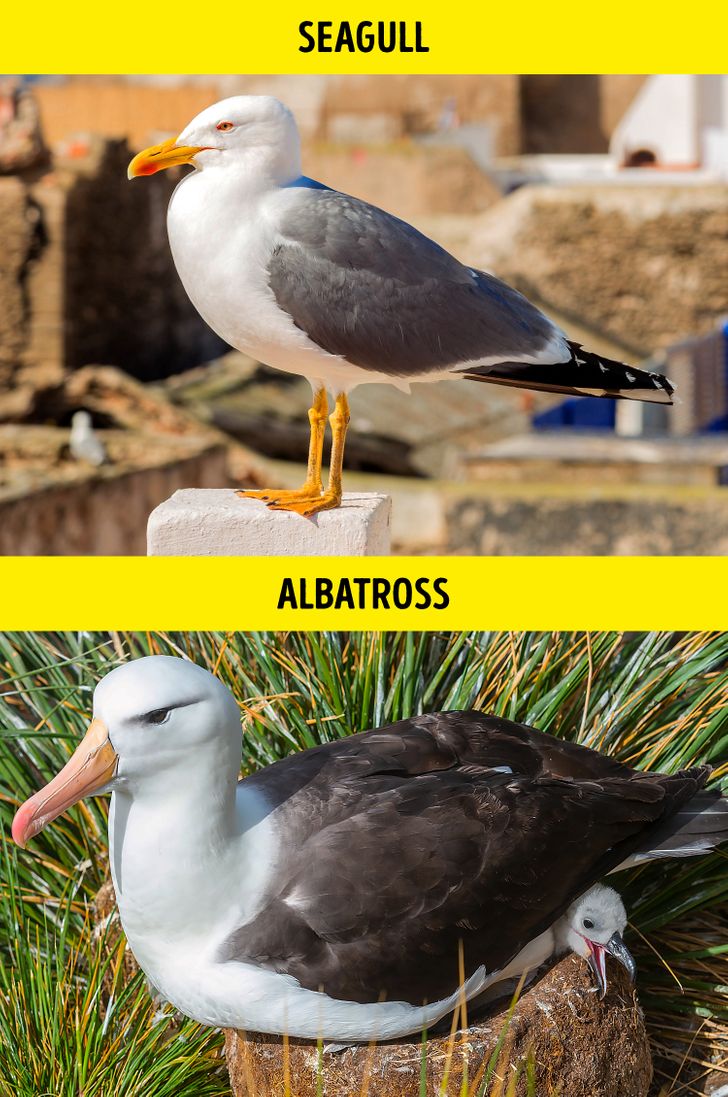
Gulls often live near water, be it the sea or ponds, and are rather acrobatic while diving and fish-catching, but aren’t fans of long voyages, unlike albatrosses. Albatrosses are portly birds who live in constant flight over the sea. They even have unique nostrils that allow them to remove salt from water and food.
15. Wolverine vs honey badger
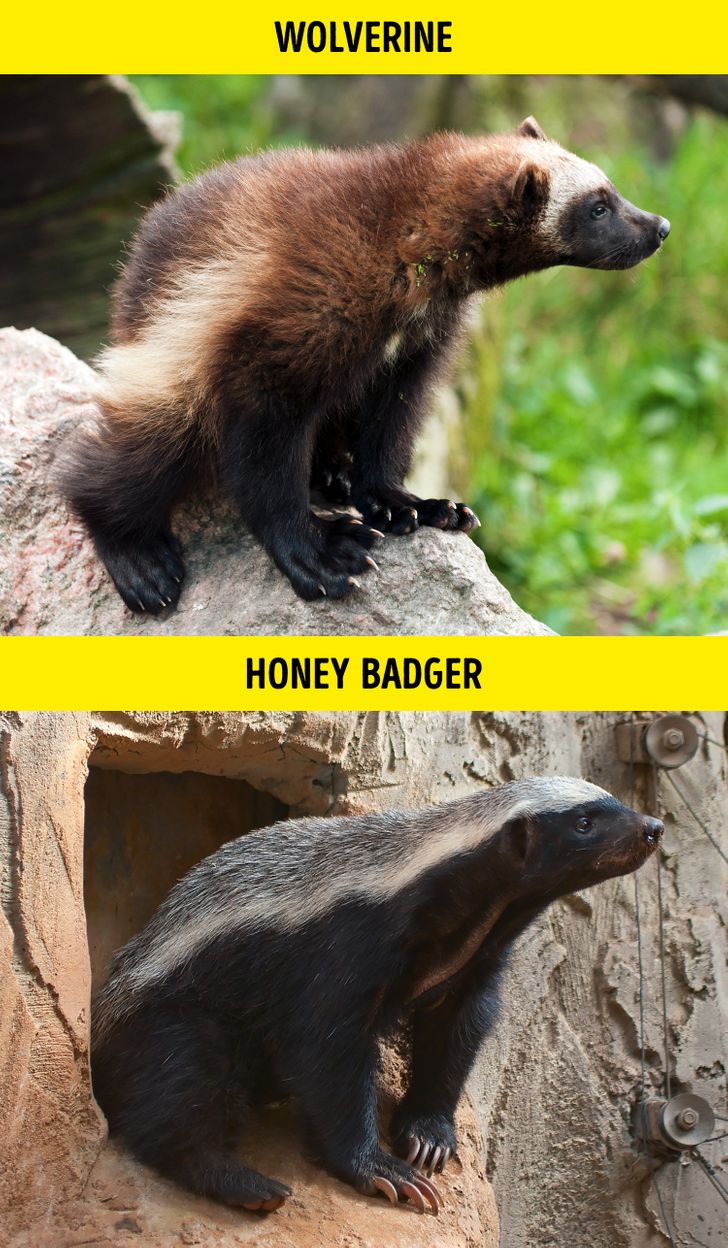
Despite living in different climate zones — the honey badger that lives in Africa and the wolverine that resides in the northern forests — both belong to the Mustelidae family. Wolverines are taller with longer legs and noticeable ears and have brown fur with yellow rings. Honey badgers keep closer to the ground and have black bodies with a white “cape” on their backs.
16. Wolf vs coyote vs jackal
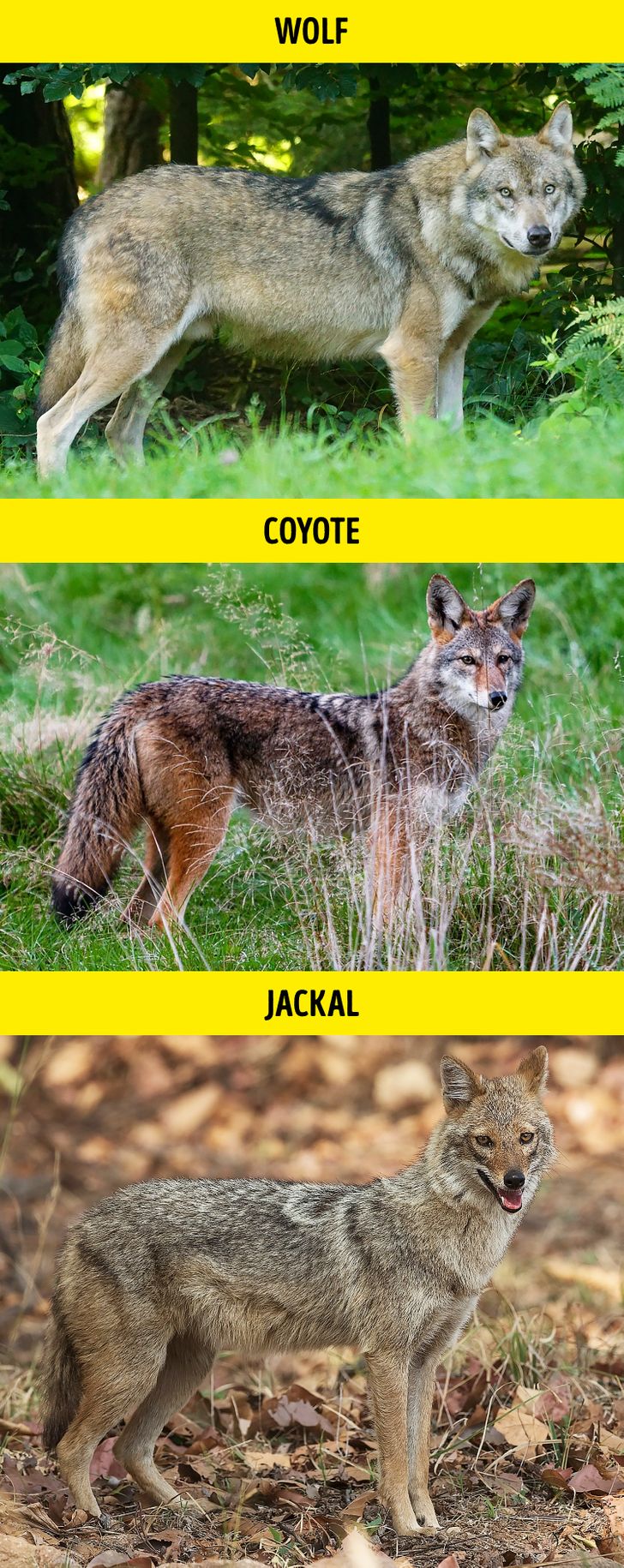
These 3 are “good boys and girls” that parade all over the globe. Jackals live in Africa, Asia, and India; coyotes live in Northern America; and wolves live all over the place. Wolves are large, sturdy animals, while coyotes and jackals possess a more lean and fragile frame.
Coyotes are recognizable for the red fur on their faces and ears while jackals have a more yellow-colored coat. Additionally, jackals are noticeably less fluffy because they don’t have to endure the harshness of winter.
Funny bonus: Wolverine vs the honey badger
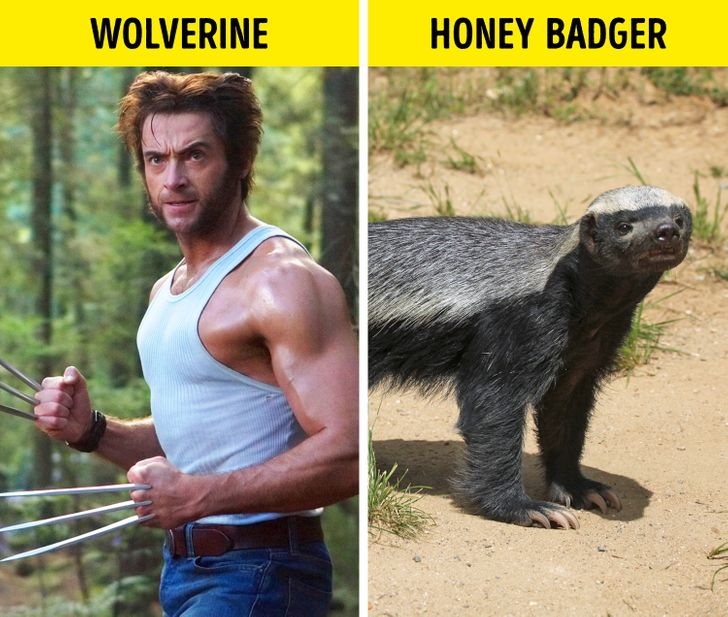
What kinds of animals have ever confused you? If you know more examples, share them in the comments!
Preview photo credit shutterstock.com, shutterstock.com
The Journey of Phil Collins: A Remarkable Career
Phil Collins, the legendary lead singer and drummer of Genesis, has had a tremendous amount of success in the music business throughout his remarkable career. He is honored to be included in the select group of musicians, including Michael Jackson and Paul McCartney, who have together sold over 100 million records in both solo and group projects. Born in London, England on January 30, 1951, to parents with a passion for the arts, Collins was surrounded by music from a young age.

Collins’s uncle gave him a homemade drum kit when he was five years old. His unique sound would be shaped by this kit, which included miniature drums, triangles, cymbals, and tambourines, and it would also set the path for his musical career.

Collins was enthralled with the burgeoning English beat culture as a child, led by bands like The Shadows. Playing often at parties thrown by his parents’ boating club, he embraced the new and vibrant musical scene that was developing.
Collins was intrigued to the rock and roll genre after being exposed to it. He bought a record player and The Beatles’ “Please Please Me” album when he was fourteen years old. He put his drum set in front of a mirror and turned up the sound so he could practice drumming more. He could participate in this way without having to look away.
Collins was motivated to learn how to read drum sheet music, so he started tutoring students. He was aware of the usefulness of written music for playing in orchestras or dancing bands, but he soon found that playing purely intuitively spoke to him more.

Collins’ life unexpectedly took an unexpected turn in the 1970s when he came across an ad looking for a drummer for the band Genesis. Collins took a chance and contacted them, and they accepted him, ushering in his remarkable musical career.
Collins was essential to Genesis during his tenure, eventually taking over as lead vocalist when other acceptable alternatives failed to materialize. Collins overcame difficulties in adjusting to his dual duty as drummer and vocalist and went on to become one of the best musicians in the business.
Collins had enormous success both as a solo artist and as a member of Genesis. He produced singles that will never be forgotten, including “In The Air Tonight,” “You Can’t Hurry Love,” and “I Don’t Care Anymore.” He chose to pursue other musical endeavors after 25 years with Genesis, concentrating on solo work, film music, and jazz ventures. But he got back together with his old bandmates in 2017 to go on the world tour for Last Domino.

Sadly, the tour had to be postponed because of the epidemic. Concerns regarding Collins’ health surfaced during an interview with BBC Breakfast, just before the tour started. With Collins returning to the vocals and his son Nicholas Collins taking up the drums, the band is optimistic about upcoming shows.
Although Nicholas is a superb drummer, Genesis keyboardist Tony Banks recognizes that he adds a special force to the songs from the early Phil Collins catalog. Phil said, “I’d like to, but I can scarcely grip a stick with this hand,” in response to a question regarding his absence from the drum kit. Collins is adamant about pursuing his musical dreams despite his physical restrictions and is willing to get over any barriers that stand in his way.

The narrator himself, a man our age, spoke openly and with a deep sense of loss about his physical struggles in a recent interview. He thought about how he could never travel with his son or share in his travels. He had to make a tough choice on whether to pursue his musical career further or give it up. It was obvious that either because of physical constraints or deliberate decisions, he would have to give up something that was important to him. He worried a lot about the consequences of missing out on life’s prospects because things were changing so quickly.

Despite everything, Phil Collins continues to be an inspiration, exhibiting fortitude and a strong love of music despite hardship. His story offers as a monument to the strength of pursuing one’s goals in spite of obstacles. We celebrate the lasting impact he has made on the music industry and look forward to his potential future musical efforts as we reflect on his incredible career.



Leave a Reply